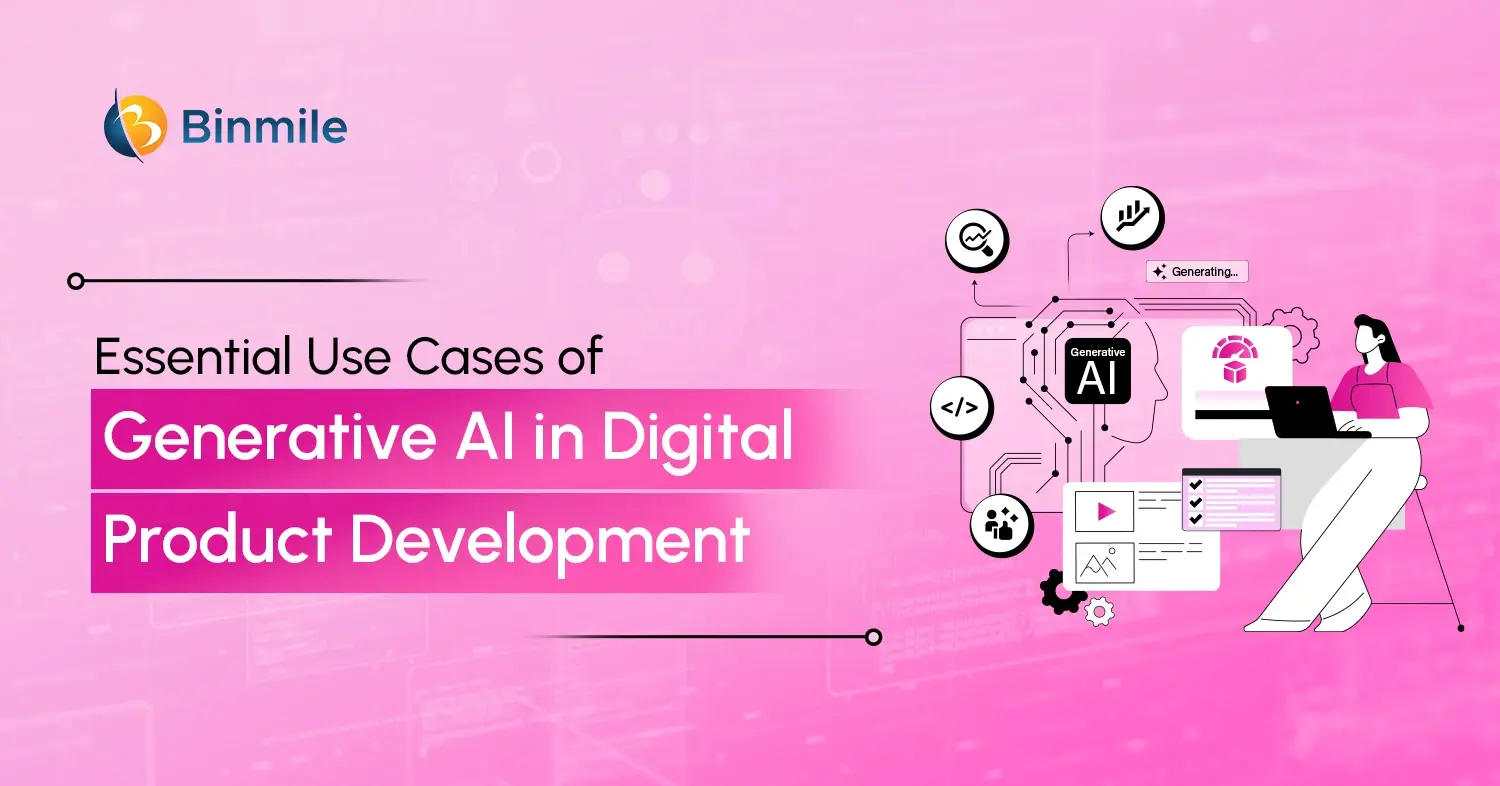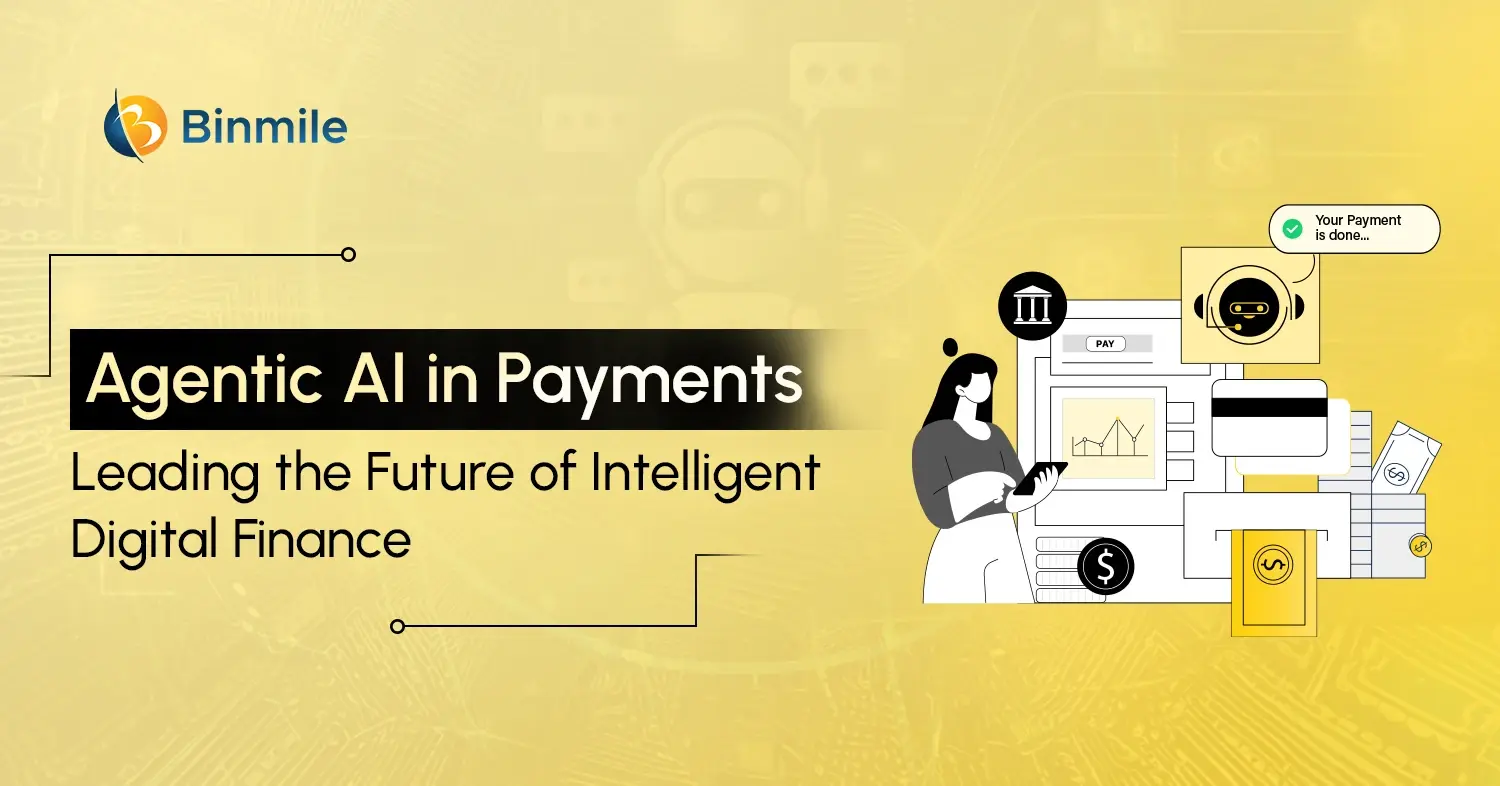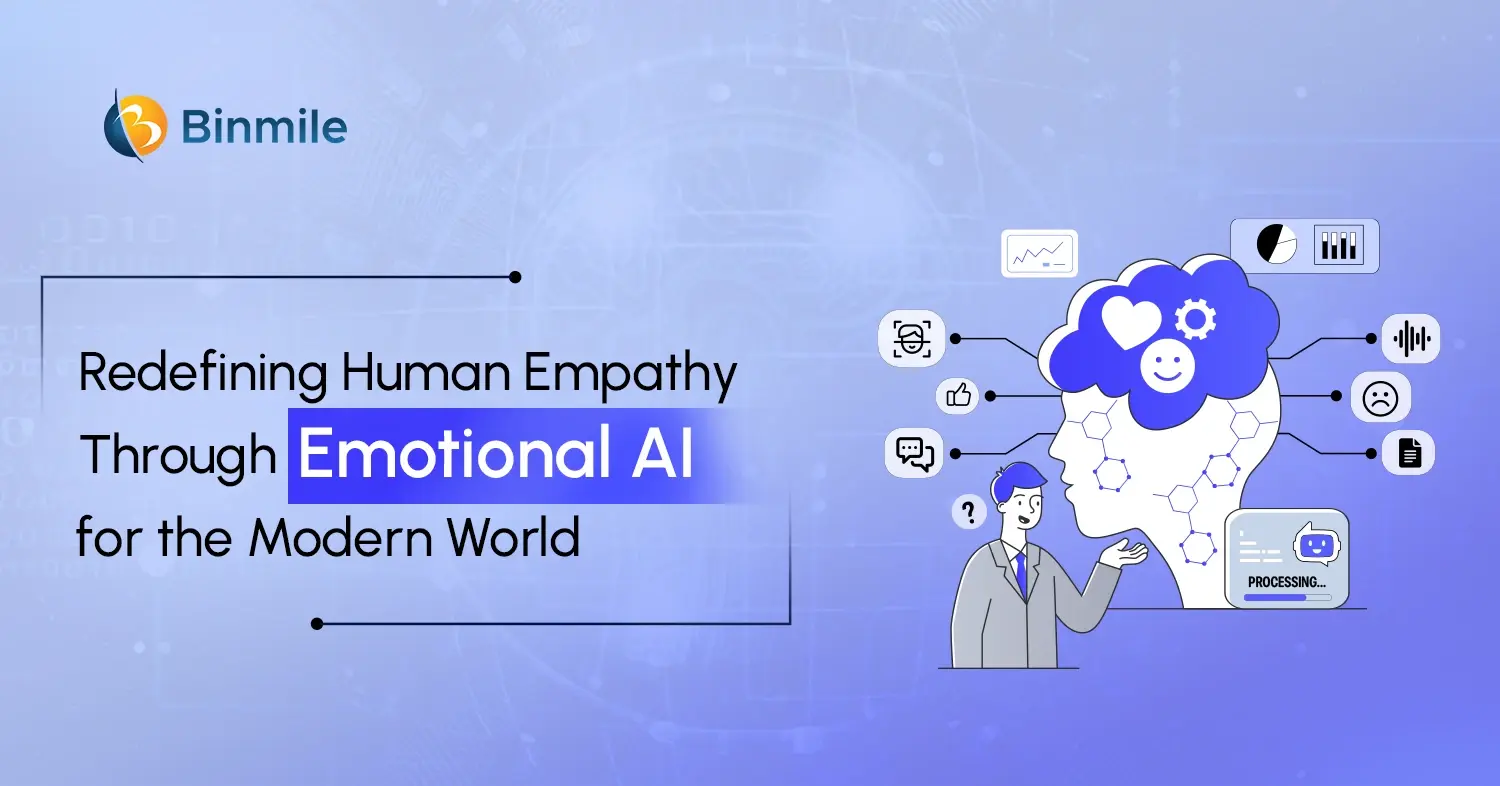Businesses embracing digital innovations must combine data and analytics to remain relevant. Additionally, this also gives them a competitive edge over organizations operating at the height of innovation. After all, business intelligence is a driving factor that lets organizations collect large subsets of data to use and derive valuable insights. The capabilities of business intelligence and analytics are evolving with the advent of artificial intelligence and its subsets and it’s becoming increasingly sophisticated, serving diverse industries with a range of capabilities. Two of the most significant branches of AI are prescriptive AI and predictive AI.
While both models leverage data to form decision-making, they operate in fundamentally different ways and serve distinct purposes. Predictive AI is a forecasting tool that utilizes historical data to identify patterns and trends, enabling businesses to anticipate future outcomes. Prescriptive AI, on the other hand, takes a more proactive approach. It predicts future outcomes and recommends optimal courses of action to achieve specific goals. Understanding the differences between these two AI models—prescriptive vs predictive analytics—is necessary to help you fully harness their capabilities by implementing the right AI strategy for startup operations and processes. Let’s examine these two artificial technologies, define their key differences, and decide which should you go for!
A Deep Dive into Prescriptive AI vs Predictive AI: Key Differences, Benefits and Applications
As a subset of AI, generative AI tools do have the power of prediction; for instance, conversational AI chatbots like ChatGPT or Gemini can suggest the next sentence in a blog, or code completion tools like GitHub Copilot can recommend the next few lines of code. However, generative AI is not predictive AI. Predictive AI has its own class of artificial intelligence that utilizes machine learning to identify patterns in past events and make predictions about future events.
What is Predictive AI?
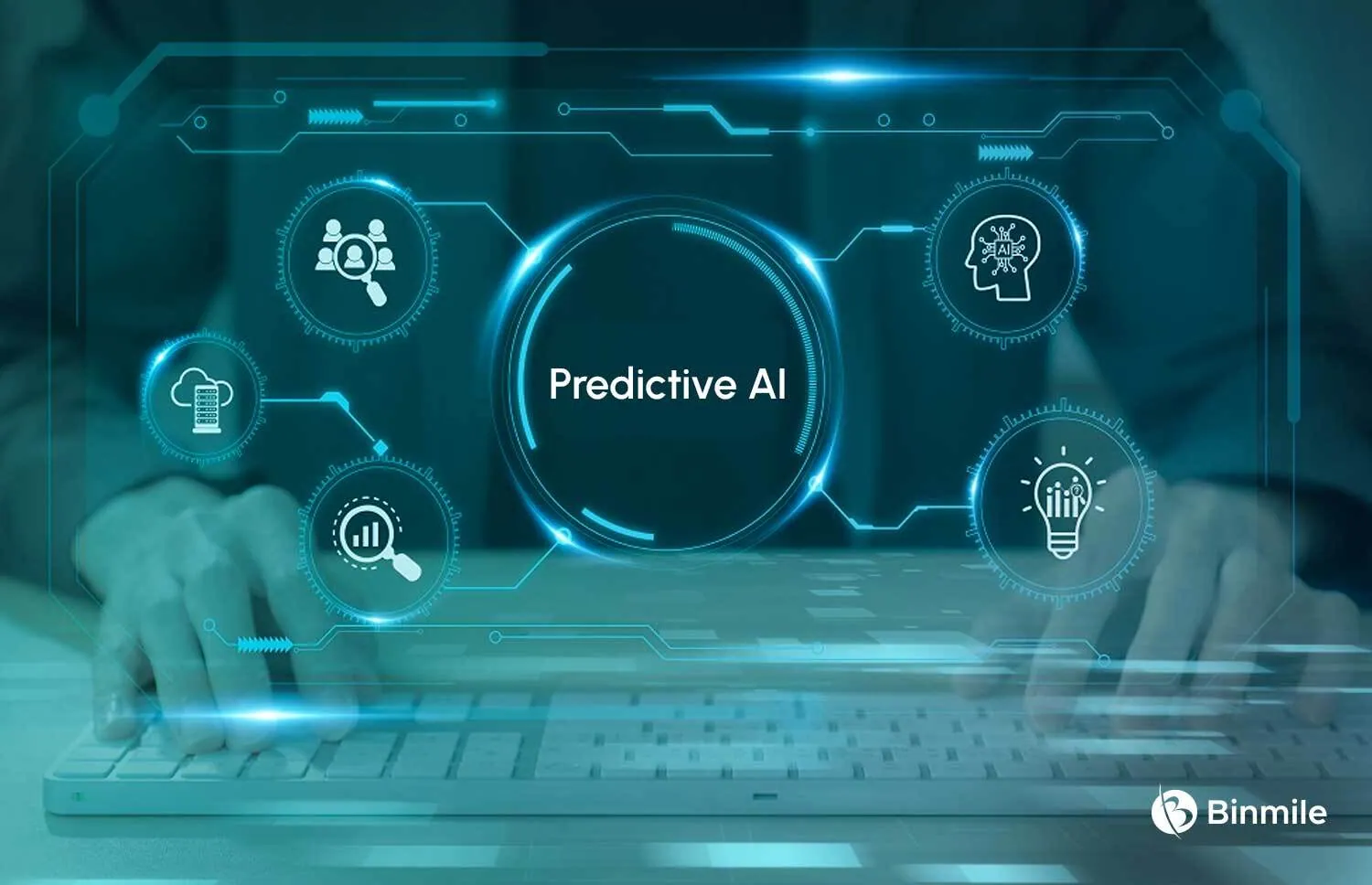
This artificial intelligence technology can identify patterns based on its access to vast amounts of data to foresee future events. While the models may not give accurate predictions, predictive AI can help businesses prepare for the future and personalize experiences for their customers.
Benefits of Predictive AI for Businesses
- Risk Mitigation: By identifying potential risks and vulnerabilities, Predictive AI helps businesses take proactive measures to mitigate them. This can lead to significant cost savings and improved operational efficiency.
- Optimized Resource Allocation: Businesses can optimize resource allocation when they’re able to forecast demand and supply. This enables them to avoid overstocking or understocking, thus improving inventory management and reducing costs.
- Personalized Customer Experiences: Predictive AI allows businesses to deliver personalized experiences with its capabilities to analyze customer behavior and preferences. This can increase customer satisfaction, loyalty, and revenue.
- Improved Product Development: It allows businesses to predict maintenance needs, optimize performance, and manage product data across various stages. Also, businesses can identify market trends and customer needs and develop innovative products that meet market demand.
What is Prescriptive AI?
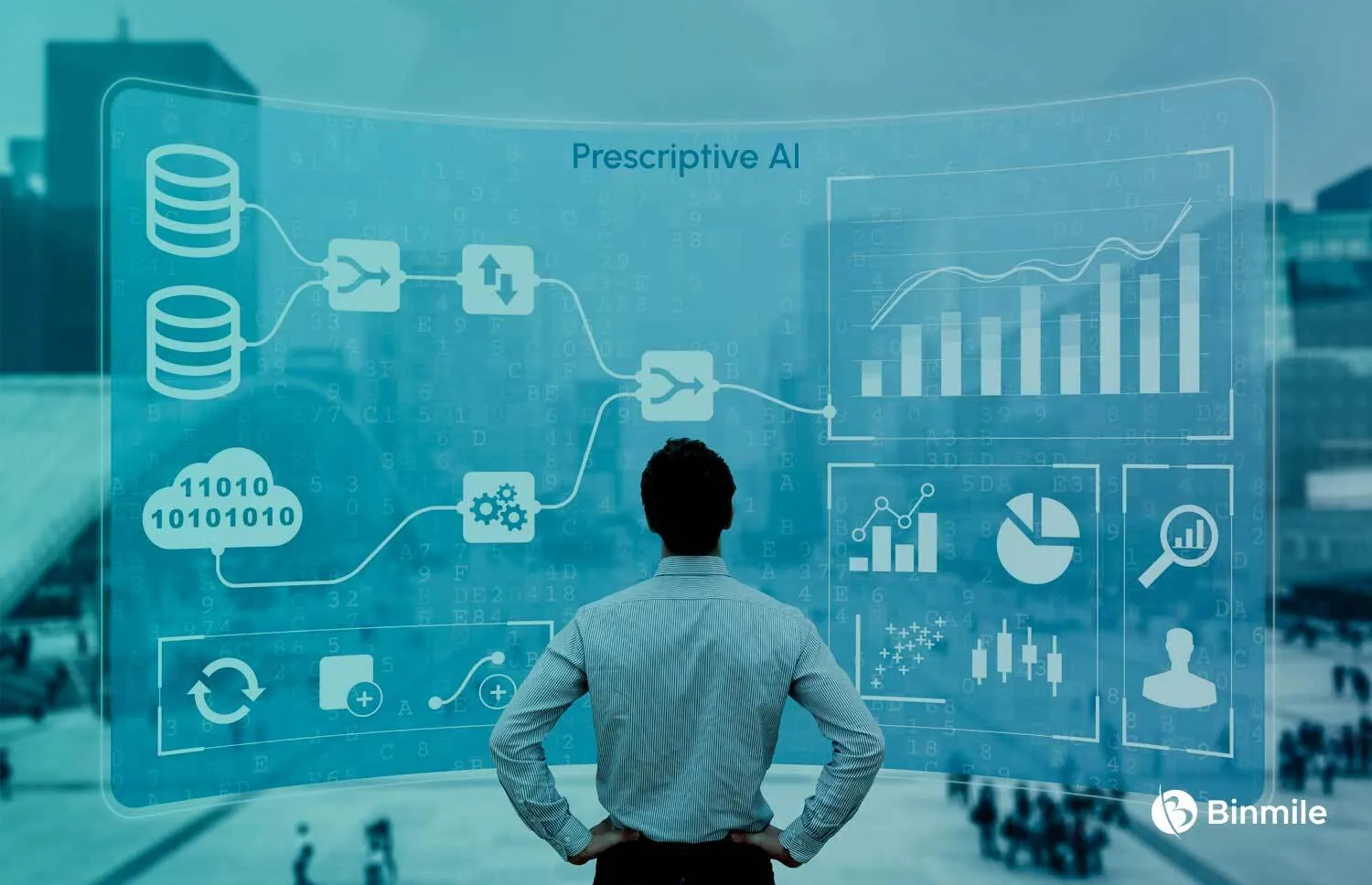
It’s a type of analytics that relies on artificial intelligence, specifically the subfield of machine learning that lets systems make decisions based on statistical data relationships and patterns. It may sound like what predictive AI does but what makes Prescriptive AI different is that it goes one step further than predictive AI. Prescriptive AI not only can predict the best outcomes by analyzing huge sets of data with patterns but it can also suggest the best possible course of action.
Benefits of Prescriptive AI to Business
- Optimized Operations: The AI model provides actionable recommendations to optimize business processes and workflows, leading to increased efficiency and productivity.
- Enhanced Decision-Making: It provides actionable insights and recommendations, thus empowering businesses to make more informed and effective decisions. Moreover, it can also lead to improved strategic planning, risk management, and overall business performance.
- Increased Revenue: When businesses can analyze historical data and implement recommended optimizations, it lets them identify cost-saving opportunities or trends for revenue growth. This leads to a leaner and more efficient operation to maximize their potential, ultimately contributing to increased profit margins.
- Improved Customer Satisfaction: When businesses are empowered to offer personalized recommendations and software solutions, this leads to enhanced customer satisfaction and loyalty.
Also Read: Why AI Fails in Enterprises?
Prescriptive AI vs Predictive AI: An In-Depth Look at Their Differences and Applications

So far, we understand what AI-driven prescriptive vs predictive analytics means for your businesses; let’s shift our focus onto what the difference is between them. Knowing how each of these AI tools has a distinctive approach to helping your business improve decision-making processes is important. Not only does this enable you to extract valuable insights from various metrics but it also lets you fully realize the potential of each.
1. Purpose and Function
- Predictive AI: The primary purpose of Predictive AI is to forecast future events based on historical data. It uses patterns, trends, and correlations in data to predict the likelihood of future outcomes. For example, in a retail setting, Predictive AI might analyze past sales data to predict which products will be in demand during the next holiday season.
- Prescriptive AI: In contrast, Prescriptive AI goes a step further by not only predicting potential outcomes but also recommending actions to achieve desired goals or mitigate risks. It’s about providing optimal solutions to specific challenges. For instance, in supply chain management, Prescriptive AI could recommend the best course of action to minimize costs while maximizing efficiency.
2. Data Requirements
- Predictive AI: These models rely heavily on historical and real-time data to detect patterns and trends. The more accurate and comprehensive the historical data, the better the predictions. This makes it ideal for scenarios where past data is a good indicator of future events, like sales forecasting, demand prediction, or risk assessment.
- Prescriptive AI: While prescriptive AI typically requires both historical data and additional contextual information such as business goals, constraints, and available resources, It also needs to simulate various scenarios and outcomes to recommend the best actions. The data used here is more diverse and complex, as the AI needs to evaluate not only past trends but also possible future scenarios and their potential impacts.
3. Output Type
- Predictive AI: The output of Predictive AI is typically a probability or a forecast. For instance, it might predict that there is a 75% chance that a particular product will sell out during a sale event. The focus is on what is likely to happen, not necessarily how to act on that information.
- Prescriptive AI: The output of Prescriptive AI is actionable recommendations. These recommendations are often in the form of “next steps” or “optimal actions” that a business should take to maximize results. For example, Prescriptive AI might suggest adjusting inventory levels, optimizing marketing efforts, or altering production schedules based on the predicted outcomes.
4. Scope of Decision-Making
- Predictive AI: Focuses mainly on forecasting the future. Its role is to inform decision-makers about what might happen under certain circumstances. It is typically reactive, giving insights into possible outcomes but leaving the final decisions up to human judgment.
- Prescriptive AI: On the other hand, Prescriptive AI is more proactive. It doesn’t just show possible future scenarios; it actively suggests the best course of action to achieve a desired outcome. In essence, Prescriptive AI takes the decision-making process one step further by suggesting what should be done based on its predictions.
5. Human Involvement
- Predictive AI: These AI models generally operate as a tool for human decision-makers, providing insights that humans can interpret and act upon. While predictive models help inform decisions, they do not replace the need for human judgment.
- Prescriptive AI: Prescriptive AI, while also a tool for decision-making, is often more autonomous in nature. It may provide complete, actionable strategies with minimal human intervention. However, human oversight is still required to ensure the AI’s recommendations align with broader strategic goals or ethical considerations.
6. Complexity of Process
- Predictive AI: These models are generally simpler because they focus on prediction without actively suggesting actions. It relies on data patterns and statistical models to forecast future events.
- Prescriptive AI: They tend to be more complex as they involve not just prediction but also optimization. It often incorporates algorithms like machine learning, optimization techniques, and simulation models to suggest the best course of action.
7. Implementation Level
- Predictive AI: Typically easier to implement because it mostly requires a historical dataset and algorithms that identify trends. Many organizations use predictive models for demand forecasting, customer behavior prediction, and financial forecasting.
- Prescriptive AI: These models require more integration with decision-making frameworks, optimization algorithms, and sometimes complex simulations. It’s commonly used in industries like supply chain management, healthcare, and financial services, where there are multiple factors and constraints to consider while making decisions.
Transform your business with AI-driven insights and data analytics—revolutionize your strategy and operations today.

Predictive AI vs Prescriptive AI: Which is Better & Key AI Applications
When to Use Predictive AI
So far, we’ve understood how Predictive AI is an essential data analytics tool when you want to understand future trends and patterns. Here are some examples of its applications in the business landscape:
- Predicting future demand for products or services can help optimize inventory levels, production schedules, and workforce planning.
- Identifying customers at risk of churn allows businesses to proactively take steps to retain them.
- Detecting fraudulent activities in real time can protect businesses from financial losses.
- Forecasting equipment failures can help schedule maintenance proactively, reducing downtime and costs.
- Assessing the likelihood of various risks, such as credit risk or operational risk, can help businesses make informed decisions.
Know the Difference: Generative AI vs Predictive AI
When to Use Prescriptive AI
An equally powerful data analytics tool, Prescriptive AI is ideal for situations where businesses need actionable recommendations to optimize decisions and achieve specific goals. Here’s where you should go for them:
- Spotting optimal routes, inventory levels, and supplier choices can help reduce costs and improve delivery times.
- Recommending personalized products and services to customers can increase sales and customer satisfaction.
- Optimizing investment portfolios to maximize returns and minimize risk.
- Developing personalized treatment plans for patients based on their individual needs and medical history.
- Identifying opportunities to streamline processes and reduce costs.
In essence, Predictive AI helps businesses anticipate the future, while Prescriptive AI helps them make the best decisions to shape that future. Both AI tools are integral parts of turning your business into an AI-powered decision-making machine; however, to answer the debate of which is better, predictive AI vs prescriptive AI, the answer is that both have their own positives and downsides. Therefore, evaluate the strengths and weaknesses of each approach and leverage their capabilities to gain a competitive advantage and drive growth.
Future-proof your business and amplify operational efficiency with AI solutions that accurately recognize, predict, & transform raw data into actionable insights.
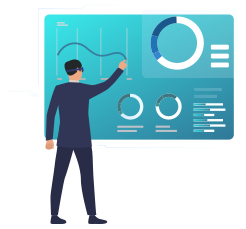
Wrapping It Up
Artificial intelligence has transformed the way businesses today conduct modern data analysis. AI technology has made analyzing vast datasets to uncover trends and gain insight into the behavior of consumers or other datasets faster, more accurate, and more intuitive. Businesses of all sizes need intelligent analytics power to not only anticipate issues and optimize processes but also make data-driven decisions proactively rather than reactively. Both Predictive and Prescriptive AI offer powerful capabilities, but they serve different purposes. Predictive AI is valuable for anticipating future events and trends, providing insights that can guide decision-making. Prescriptive AI, on the other hand, takes those insights a step further by recommending the best actions to optimize outcomes.
Hopefully, this blog has given you insight into predictive AI vs prescriptive AI analytics, and the understanding that despite having different approaches to data analysis, these two models let you process, interpret, and gain insights from large volumes of complex data smoothly and efficiently. Therefore, businesses that know the distinctions between AI-powered prescriptive vs predictive analytics can successfully utilize AI to make data-driven decisions and drive performance, efficiency, and success.
Frequently Asked Questions
Predictive AI leverages machine learning algorithms to analyze historical and real-time data, identifying patterns that help forecast future outcomes. It is widely used in sectors like finance, healthcare, and marketing to anticipate customer behavior, detect risks, and optimize operations.
Use prescriptive AI when you need actionable recommendations and not just predictions. While predictive AI tells you what might happen, prescriptive AI suggests what steps to take next to achieve the best outcome. It’s ideal for scenarios like supply chain optimization, resource allocation, and personalized marketing strategies.
Absolutely. Many predictive AI tools offer APIs or platform connectors for seamless integration with CRM, ERP, and cloud systems. This ensures real-time data processing and smooth workflow automation across departments.
Some top predictive AI tools in the market include:
- IBM Watson Studio – for data science and machine learning
- Amazon Forecast – for time series forecasting
- Google Cloud AI Platform – for custom predictive modeling
- RapidMiner – for visual data science workflows
Each tool varies in capabilities, so the best choice depends on your business needs and technical expertise.


